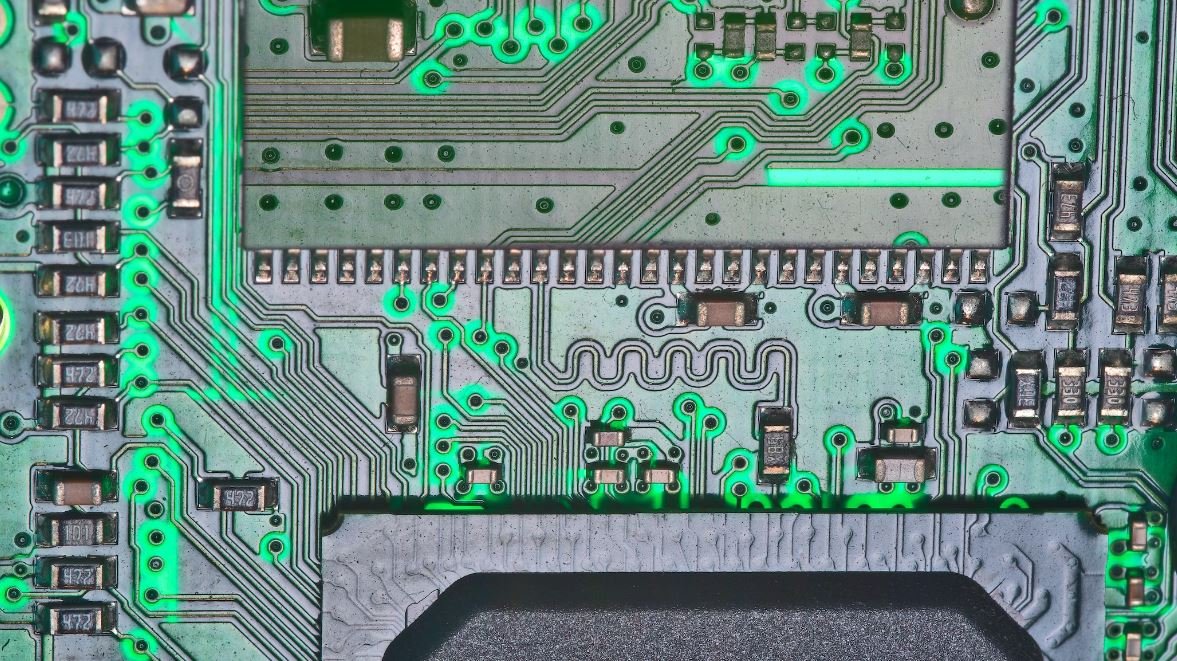Neural Network Hyperparameters
Neural networks are highly effective machine learning models that have revolutionized various domains, from computer vision to natural language processing. However, achieving optimal performance with a neural network requires careful tuning of its hyperparameters. In this article, we will dive into the world of neural network hyperparameters and explore how they impact the performance and generalization abilities of the model.
Key Takeaways:
- Neural network hyperparameters greatly influence the performance and generalization abilities.
- Proper tuning of hyperparameters is crucial for achieving optimal results.
- Hyperparameters include the number of layers, neurons per layer, learning rate, activation functions, and regularization techniques.
- Iterative experimentation and model evaluation are necessary to find the best hyperparameter values.
Neural networks consist of multiple layers of interconnected nodes, known as neurons. Each neuron performs a weighted sum of its inputs, applies an activation function to it, and passes it as output to the next layer. To effectively learn from the data, neural networks require calibration of various hyperparameters.
One fundamental hyperparameter is the number of layers in the network. Deeper networks are capable of learning more complex representations, but they are also more prone to overfitting. Conversely, shallow networks may struggle to capture intricate patterns. An interesting fact is that the ImageNet-winning Convolutional Neural Networks (CNNs) typically have dozens of layers.
The number of neurons per layer is another crucial hyperparameter. Increasing the number of neurons allows the network to learn more intricate features but also increases its computational complexity. Too few neurons may result in an underpowered model, while too many can lead to overfitting. *Interestingly, one study found that the optimal number of neurons per hidden layer can be approximated by the geometric mean of the number of input and output neurons in that layer.
Aside from the architecture, activation functions play a vital role in neural networks. Activation functions introduce non-linearity, enabling neural networks to approximate complex functions. Options range from sigmoid functions like the logistic function to rectified linear units (ReLU) and hyperbolic tangent. An *interesting fact* is that ReLU is often preferred because it reduces the vanishing gradient problem.
Table 1: Popular Activation Functions
| Activation Function | Expression |
|---|---|
| Logistic Function | 1 / (1 + e^(-x)) |
| ReLU (Rectified Linear Unit) | max(0, x) |
| Hyperbolic Tangent | tanh(x) |
Training a neural network involves adjusting its weights iteratively to minimize a predefined loss function. The learning rate dictates the step size during weight updates. High learning rates may lead to convergence issues, whereas very low learning rates can significantly slow down training. An *interesting fact* is that some advanced optimization algorithms can adaptively adjust the learning rate during training.
Another essential concept is regularization, which helps control overfitting in neural networks. Regularization techniques such as L1 and L2 regularization add a penalty term to the loss function, discouraging large weight values. This prevents the model from fitting noise in the training data. A *fascinating aspect* is that L1 regularization can lead to sparse weight matrices, enabling feature selection.
Table 2: Regularization Techniques
| Regularization Technique | Penalty Term |
|---|---|
| L1 Regularization | λ * |weights| |
| L2 Regularization | λ * ||weights||^2 |
Discovering the optimal hyperparameter configuration for a neural network is often achieved through iterative experimentation. Researchers and practitioners employ techniques such as grid search, random search, and Bayesian optimization. By evaluating the model on a separate validation set, hyperparameter values yielding the best performance are selected. Semi-automated tools like KerasTuner and Optuna automate this process to facilitate hyperparameter tuning.
It is important to note that neural network hyperparameters are highly problem-dependent, and there is no “one-size-fits-all” configuration. Neural networks require careful tuning to strike the balance between model complexity and generalization. The journey of hyperparameter optimization often involves several cycles of tweaking, retraining, and reevaluation.
Table 3: Hyperparameter Optimization Techniques
| Technique | Description |
|---|---|
| Grid Search | Exhaustively searches hyperparameter combinations |
| Random Search | Samples random hyperparameter combinations |
| Bayesian Optimization | Models hyperparameter space and finds optimal values using probabilistic models |
Neural network hyperparameters are key to training models that can accurately generalize to unseen data. By optimizing these parameters, we can harness the power of neural networks and unlock their potential across diverse domains. So, before training your next neural network model, make sure to dive into hyperparameter tuning and maximize its capabilities!

Common Misconceptions
Misconception 1: Hyperparameter tuning is not essential
Many people underestimate the importance of hyperparameter tuning when training a neural network. They believe that simply building the network structure and choosing a suitable learning rate is enough to achieve good results. However, hyperparameters such as the number of layers, number of neurons, regularization techniques, and optimizer choices significantly impact the network’s performance.
- Hyperparameter tuning can lead to significant improvements in network accuracy.
- Optimal hyperparameter values vary depending on the dataset and task.
- Ignoring hyperparameter tuning can lead to underperforming neural networks.
Misconception 2: More layers always mean better performance
Another common misconception is that adding more layers to a neural network will always lead to better performance. While adding layers can help capture more complex patterns, there is a trade-off between model complexity and overfitting. Adding too many layers may result in poor generalization, increased training time, and difficulty in training the network.
- Adding more layers may increase the risk of overfitting.
- Careful consideration must be given to the network architecture to balance complexity and performance.
- Simple tasks may not require deep networks and can be adequately modeled with fewer layers.
Misconception 3: A higher learning rate always leads to faster convergence
Some individuals mistakenly believe that using a higher learning rate in neural networks will always result in faster convergence. While a high learning rate can accelerate training initially, it can also hinder convergence or cause instability as the network may overshoot the optimal weights and fail to converge to a good solution.
- Choosing an optimal learning rate requires balancing convergence speed and stability.
- A higher learning rate can increase the risk of the network overshooting the optimal solution.
- Gradient-based optimization algorithms can help identify a suitable learning rate.
Misconception 4: Regularization always improves performance
Regularization techniques, such as L1, L2, or dropout, are commonly used to prevent overfitting in neural networks. However, some people incorrectly assume that applying regularization will always improve the network’s accuracy. While regularization can help control overfitting, it may also reduce the network’s capacity to fit the training data properly and potentially lead to underfitting.
- The choice and strength of regularization should be determined based on the specific data and model complexity.
- Applying too much regularization can result in underfitting and lower overall performance.
- Regularization is not a guaranteed solution to all overfitting issues.
Misconception 5: Default hyperparameter values are optimal
Many beginners assume that the default hyperparameter values provided by deep learning libraries are optimal for all scenarios. However, libraries often provide generic default values that may not work optimally for every dataset or task. It is crucial to perform proper hyperparameter search and tuning to find the best values for a given problem.
- A thorough hyperparameter search is necessary to identify the best settings for a specific task.
- Most libraries offer default values that serve as reasonable starting points and need to be fine-tuned.
- Different datasets and problems may require different hyperparameter configurations to achieve optimal results.

Neural Network Hyperparameters
Neural networks are complex models used in machine learning to tackle various tasks. One crucial aspect of building a neural network is selecting the appropriate hyperparameters. These hyperparameters determine the network’s performance and efficiency. In this article, we will explore ten important hyperparameters and their impacts on neural network training.
Learning Rate
The learning rate determines the step size at which the model updates the network’s weights during training. A high learning rate may cause the network to overshoot the optimal solution, while a low learning rate may slow down convergence.
| Hyperparameter | Value |
|---|---|
| Learning Rate | 0.01 |
Batch Size
The batch size refers to the number of training examples used in each iteration of the network. A larger batch size can lead to faster convergence but requires more memory, while a smaller batch size may offer a more accurate gradient estimate.
| Hyperparameter | Value |
|---|---|
| Batch Size | 64 |
Activation Function
The activation function introduces non-linearity into the network. Different activation functions have varying characteristics, such as the ability to model complex relationships or avoid the vanishing gradient problem.
| Hyperparameter | Value |
|---|---|
| Activation Function | ReLU |
Number of Hidden Layers
Choosing the number of hidden layers impacts the network’s capacity to model complex relationships. Too few layers may hinder the model’s ability to learn intricate patterns, while too many layers can lead to overfitting or inefficient training.
| Hyperparameter | Value |
|---|---|
| Number of Hidden Layers | 3 |
Dropout Rate
Dropout is a regularization technique that randomly sets a fraction of the network’s activations to zero during training. It helps prevent overfitting by reducing the interdependence between neurons.
| Hyperparameter | Value |
|---|---|
| Dropout Rate | 0.2 |
Weight Initialization
During the network’s initialization, the weights are assigned random values. Choosing an appropriate weight initialization method is crucial to avoid vanishing or exploding gradients at the beginning of training.
| Hyperparameter | Value |
|---|---|
| Weight Initialization | He Normal |
Optimizer
An optimizer determines how the network adjusts its weights based on the computed gradients during training. Different optimizers have distinct behaviors, such as momentum, adaptive learning rates, or convergence guarantees.
| Hyperparameter | Value |
|---|---|
| Optimizer | Adam |
Learning Rate Decay
Learning rate decay refers to reducing the learning rate over time to improve convergence. This approach accounts for the diminishing effect of updates as the training progresses.
| Hyperparameter | Value |
|---|---|
| Learning Rate Decay | 0.1 |
Regularization
Regularization techniques, such as L1 or L2 regularization, add a penalty term to the loss function, discouraging the network from overemphasizing specific weights and reducing overfitting.
| Hyperparameter | Value |
|---|---|
| Regularization | L2 |
Early Stopping
Early stopping is a technique used to prevent overfitting by monitoring the model’s performance on a validation set. Training stops when the validation loss stops improving, thus avoiding unnecessary training iterations.
| Hyperparameter | Value |
|---|---|
| Early Stopping | Enabled |
Optimizing neural network hyperparameters is crucial for achieving high-quality models. By carefully tuning these parameters, practitioners can enhance accuracy, speed of convergence, and avoid issues like overfitting or underfitting.
Frequently Asked Questions
What are hyperparameters in a neural network?
Hyperparameters in a neural network are parameters that are set before the learning process begins and are not directly learned from the data. These parameters control the behavior and performance of the neural network.
What is the role of learning rate in neural network hyperparameters?
The learning rate is a hyperparameter that controls the step size at which the neural network adjusts its weights during the training process. It determines the speed at which the neural network learns and converges to an optimum solution.
How does the number of hidden layers affect neural network performance?
The number of hidden layers in a neural network is a crucial hyperparameter that determines the network’s capacity to learn complex patterns. Increasing the number of hidden layers can allow the network to capture more intricate relationships in the data, but it may also lead to overfitting if not properly tuned.
What is the impact of the number of neurons in a neural network?
The number of neurons in a neural network determines its model capacity, or the complexity of functions it can represent. More neurons may provide the network with a higher capacity to learn intricate patterns, but larger networks may also be more computationally expensive and prone to overfitting.
How does the choice of activation function influence neural network performance?
The activation function affects the non-linearity and expressiveness of a neural network. Different activation functions have different properties and can be selected based on the specific characteristics of the problem at hand. It is crucial to choose an appropriate activation function to ensure good performance.
Why is regularization necessary in neural networks?
Regularization is necessary to prevent overfitting in neural networks. It adds a penalty term to the loss function, discouraging the network from memorizing the training data and encouraging it to generalize well to unseen data.
How do batch size and epoch relate to neural network training?
Batch size determines the number of training examples used in each forward and backward pass during training. An epoch refers to a complete pass through the entire training dataset. The choice of batch size and the number of epochs affect convergence speed, memory usage, and generalization performance.
What is the purpose of dropout regularization in neural networks?
Dropout regularization is a technique where randomly selected neurons are ignored during the training process, which reduces overfitting. It helps prevent the network from relying too heavily on specific activations and encourages the learning of more robust and generalized representations.
How can I choose the best hyperparameters for my neural network?
Choosing the best hyperparameters for a neural network is often a trial-and-error process. It involves experimentation and tuning based on the specific problem and dataset. Techniques like grid search, random search, or more advanced optimization algorithms can be employed to find the optimal combination of hyperparameters.
What happens if I don’t tune the hyperparameters of my neural network?
If the hyperparameters of a neural network are not properly tuned, the network may underperform or even fail to converge. Suboptimal hyperparameters can lead to slow training, poor validation performance, and insufficient generalization to unseen data.




